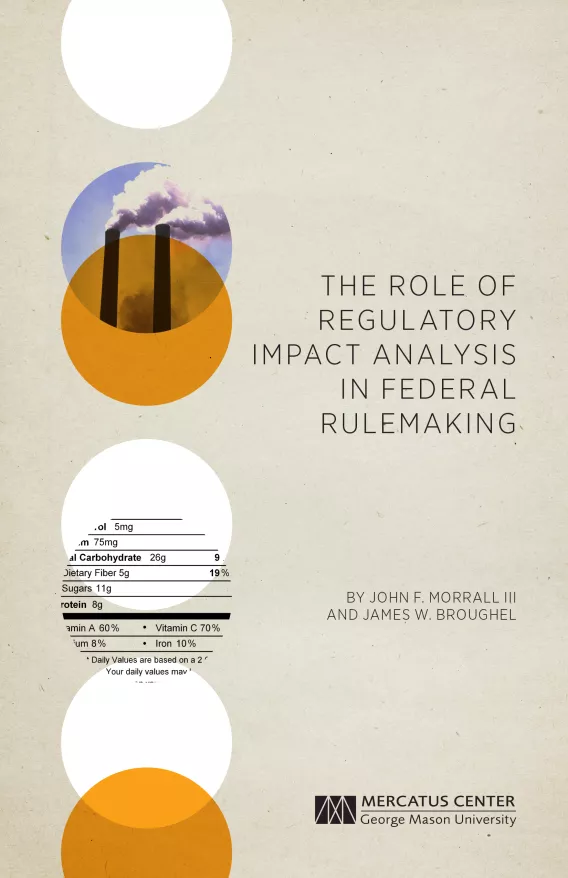- | Regulation Regulation
- | Research Papers Research Papers
- |
The Role of Regulatory Impact Analysis in Federal Rulemaking
Regulatory impact analysis (RIA) is a tool regulators use to help guide them through the decision-making process when promulgating regulations. The goals of an RIA are simple and straightforward: to assess whether a problem exists that is systemic in nature and therefore requires intervention, to define the desired outcome sought through intervention, to describe the various alternatives that might address the problem and bring about the desired outcome, and to compare the benefits and costs of each alternative.

Regulatory impact analysis (RIA) is a tool regulators use to help guide them through the decision-making process when promulgating regulations. The goals of an RIA are simple and straightforward: to assess whether a problem exists that is systemic in nature and therefore requires intervention, to define the desired outcome sought through intervention, to describe the various alternatives that might address the problem and bring about the desired outcome, and to compare the benefits and costs of each alternative.
Since 1981, presidential oversight of rulemaking has required that RIAs be performed by executive branch agencies. These RIAs, in turn, are to be reviewed by the Office of Information and Regulatory Affairs (OIRA), a statutory office located within the Office of Management and Budget (OMB). Requirements for conducting a well-informed RIA, such as identifying the problem the agency is seeking to solve through regulation and considering a variety of alternative forms of regulation, were codified for presidential oversight of rulemaking by Executive Order (EO) 12866, issued by President Clinton in 1993. The very first principle of regulation listed in the executive order states,
Each agency shall identify the problem that it intends to address (including, where applicable, the failures of private markets or public institutions that warrant new agency action) as well as assess the significance of that problem.
Similarly, the executive order also states that “agencies should assess all costs and benefits of available regulatory alternatives, including the alternative of not regulating.” In fact, both EO 12866 and OMB guidelines present a wide variety of types of alternatives that agencies should consider.
When identifying a problem, it is important that regulators address root causes of problems, not just symptoms of problems. For example, imagine that a house has a leaky roof. The problem is the hole in the roof. The symptom is a wet floor. The occupants could spend all day mopping the floor and blowing a heater on it—the surface might dry temporarily, but until they patch the roof, the problem will continue. An RIA helps agencies focus on the problem so that proposed regulatory fixes are providing genuine solutions rather than mopping wet floors.
It is also important that agencies consider alternative ways of solving problems. OMB, in its guidance on best practices for regulatory analysis, recommends that agencies consider alternative approaches to solving problems. Ideally, these alternatives should vary in stringency and in the type of option considered (e.g., command and control versus performance-based standards). OMB also recommends that alternatives be compared against a baseline that represents a realistic portrayal of what the world would look like in the absence of a regulation. A baseline is important because the world is a constantly evolving place. Regulations should not take credit for changes that would have occurred anyway. Similarly, a regulation should receive credit for improving a situation that appears to be deteriorating even after the implementation of the regulation if the situation likely would have been even worse in the absence of the regulation. A well-thought-out baseline gives regulators a reference point against which to gauge the effectiveness of policies.

